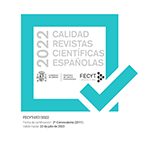Allium goumenissanum (Amaryllidaceae), a new species for Bulgaria and new localities in Greece, with additions to the genetic, cytogenetic and morphological characteristics of the species
Abstract
Allium sect. Codonoprasum represents an evolutionarily young and rapidly radiating group of
bulbous geophytes, with a significant proportion of polyploids and minor morphological differences
between species. In the last 20 years, dozens of new species have been described from the Mediterranean.
However, very little new information has been obtained on most of them since their description, especially
in terms of cytogenetic, molecular and distribution data. Allium goumenissanum is a recently described
species of this section, known only from three nearby localities in northern Greece. During the last 10 years,
we collected population samples of an unknown species of this section from the southern Balkans, which
seemed to be representative of A. goumenissanum. A variety of methods (cytogenetic, molecular,
morphological and micromorphological) were used to compare the populations of an unknown species with
the morphologically similar species A. goumenissanum and A. stamatiadae. AFLP, ITS sequencing and
genome size analyses showed that all populations of the unknown species were in fact A. goumenissanum
distinct from A. stamatiadae. The characterization of the morphology and reproduction of A.
goumenissanum is completed, and micromorphological and anatomical characteristics of the leaves of both
species are newly published. The distribution of A. goumenissanum, based on new data, now includes a
more extensive area of north central Greece, and the species is found as a new taxon for Bulgaria.
Downloads
License
Mediterranean Botany is an open access journal to promote global exchange knowledge. It facilitates unrestricted access to its contents from the moment of publication in its electronic edition. The originals published are property of the Universidad Complutense and it is mandatory to cite such source in case of total or partial reproduction. All contents are distributed under a Creative Commons License 4.0 (CC BY 4.0). This circumstance must be expressly stated in this way when necessary. You can check the informative version and legal text of the license.














